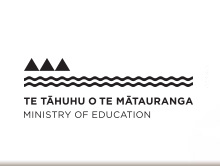Tātai Poto (wh. 4)
He tātai whakapapa
Genealogical table
| Te momo reo tuhi Language style |
|
|---|---|
| Ētahi āhuatanga o tēnei momo reo tuhi Features of this language style |
|
I te Ākonga e Pānui ana i te Pukapuka
During Reading
He Ngohe
Anei ētahi whakaaro mō ētahi ngohe e hāngai ana ki ngā kōrero katoa o roto o Whakawhiti 33, Tūhoronuku. Ka taea e te pouako ēnei te whakamahi kia tutuki ai ngā whāinga whakaako me ngā whāinga ako. Ka taea anō e ia te rāwekeweke ēnei whakaaro kia hāngai ake ki ngā whāinga ako me ngā hiahia o ngā ākonga.
Learning Activities
Here are some ideas for learning activities aligned with the writing in Whakawhiti 33, Tūhoronuku. Pouako can use these to help achieve their teaching and learning objectives. These ideas can be adapted to align with the learning objectives and needs of the students.
1. Pānuihia te kōrero poto me te tātai whakapapa. Kātahi, patapatai atu ki ngā ākonga mō te whakapapa. Anei ētahi pātai:
Ko wai ngā mātua o Uenuku-kuare?
Ko wai ngā mātua o Kaharau?
Ko wai te tupuna o Uenuku-kuare?
Nō tēhea waka tēnei whānau?
Ko wai te rangatira i tere mai i Raiātea?
Read the short summary and the genealogical table. Then ask students questions about the whakapapa. Here are some questions:
Who are the parents of Uenuku-kuare?
Who are the parents of Kaharau?
Who is the grandfather of Uenuku-kuare?
Which waka does this family belong to?
Who was the chief who sailed here from Raiātea?



